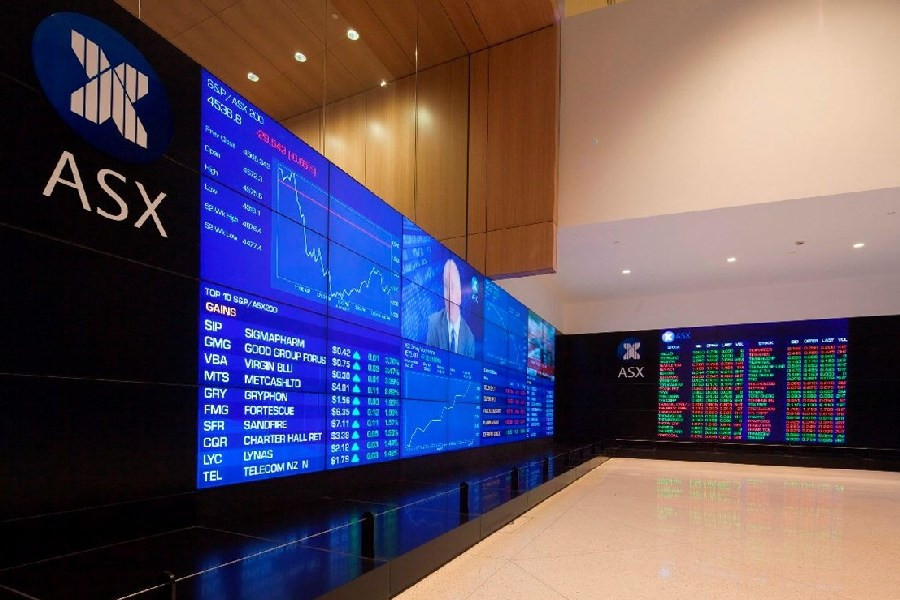
After the multidirectional closing of Wall Street on Friday and the "hike" of the main S&P 500 index in the bearish zone, one should not expect great optimism on the stock exchanges in Asia today either. Global markets are preparing for the increase in interest rates by the world's central banks. On Wednesday, June 22, Federal Reserve Chairman Jerome Powell will present to the US Congress his biennial appeal on monetary policy. Is there any doubt that the market will receive confirmation of the already strong further tightening of the US central bank? And again, after the aggressive actions of the Fed, which immediately raised the rate by 75 bp etc., monetary central banks of other countries will also be forced to take certain response actions.
Thus, the Reserve Bank of Australia, which is moving along the path of the Fed, raised interest rates already this year - in May and June. Moreover, if the first increase (by a quarter of a point) came as a surprise to the market due to the approaching federal elections in the country, then the second - in terms of its size. For the first time in the last 22 years, the RBA made the maximum move - by 50 bp (up to 0.85%). In terms of aggressiveness in monetary policy, the Australian central bank was even ahead of its American counterpart for some time. Moreover, in a statement by the head of the RBA, Philip Lowe, assurances were made that "in the coming months, the council intends to take further steps in the process of normalizing Australia's monetary conditions."
The Reserve Bank of New Zealand is moving along the same path, but its "steps" so far look more even. The key rate has already been raised by the RBNZ twice – in August and May. And both times - by 0.50%. Now its level is 2.0% (in 2022 at 1%). As you can see, the New Zealand option is still the same way to fight global inflation.
Japan and the special path of the Bank of Japan have been discussed in detail earlier. In an ongoing effort to keep 10-year JGB yields at the lowest possible levels, the BOJ set its own record on Friday. The central bank bought back $80.8 billion worth of government bonds! We can only add that today such an extremely soft monetary policy of the BOJ gives the best results among all the economies of large developed countries.
Yes, there is inflation in the country. But, firstly, it is low relative to other countries - a little over 2%. And secondly, its base rate (excluding raw materials and food products) is generally equal to 0.8%. That is, inflation in Japan is growing due to external factors, while there is no increase in wages.
The People's Bank of China is also following its own special path (not raising, but lowering rates). At its meeting today, the PBC kept the base interest rate on loans (LPR) for a period of one year at 3.7% per annum. Last year, in December, its size was reduced by 5 bp, then an additional 10 bp in January 2022. Since then it has remained and, as we see, remains unchanged. The LPR became the new benchmark in August 2019 following the Chinese central bank's interest rate reform. And when determining rates on new loans from 2020, the PBC requires banks to focus specifically on LPR.
In addition, China, as Australia's largest trading partner, amid the fight against COVID-19, reduces not only the volume of purchases, but also its own production. Thus, the fall in production at Chinese steel mills hit the demand for iron ore. This led to the collapse of the shares of three Australian mining giants today - Fortescue (to a 3-month low), Rio Tinto and BHP (to monthly lows). On the other hand, the Australian economy is capitalizing on the geopolitical crisis in Europe. Many goods supplied by Ukraine and Russia are also sold by Australia. Every month, the country's trade balance receives an increase in net profit of up to 10 billion Australian dollars.
And how did the Asia-Pacific stock exchanges trade amid a lull in the US market and the growing fear of a recession?
MSCI (APAC, except Japan) - 2,485 (daily range 2,467-2,507)
Nikkei 225 (Japan) - 25,771 (daily range 25,520-26,156)
Shanghai Composite (China) – 3,315 (daily range 3,292–3,333)
S&P/ASX 200 (Australia) - 6433 (daily range 6407-6493)
NZX 50 (New Zealand) - 10,588 (closing price 10,588)
Hang Seng (Hong Kong) - 21,163 (daily range 20,839-21,175)
KOSPI (South Korea) – 2,391 (opening price 2,449)
(Data as of 15.15 GMT)
 English
English 
 Русский
Русский Bahasa Indonesia
Bahasa Indonesia Bahasa Malay
Bahasa Malay ไทย
ไทย Español
Español Deutsch
Deutsch Български
Български Français
Français Tiếng Việt
Tiếng Việt 中文
中文 বাংলা
বাংলা हिन्दी
हिन्दी Čeština
Čeština Українська
Українська Română
Română

